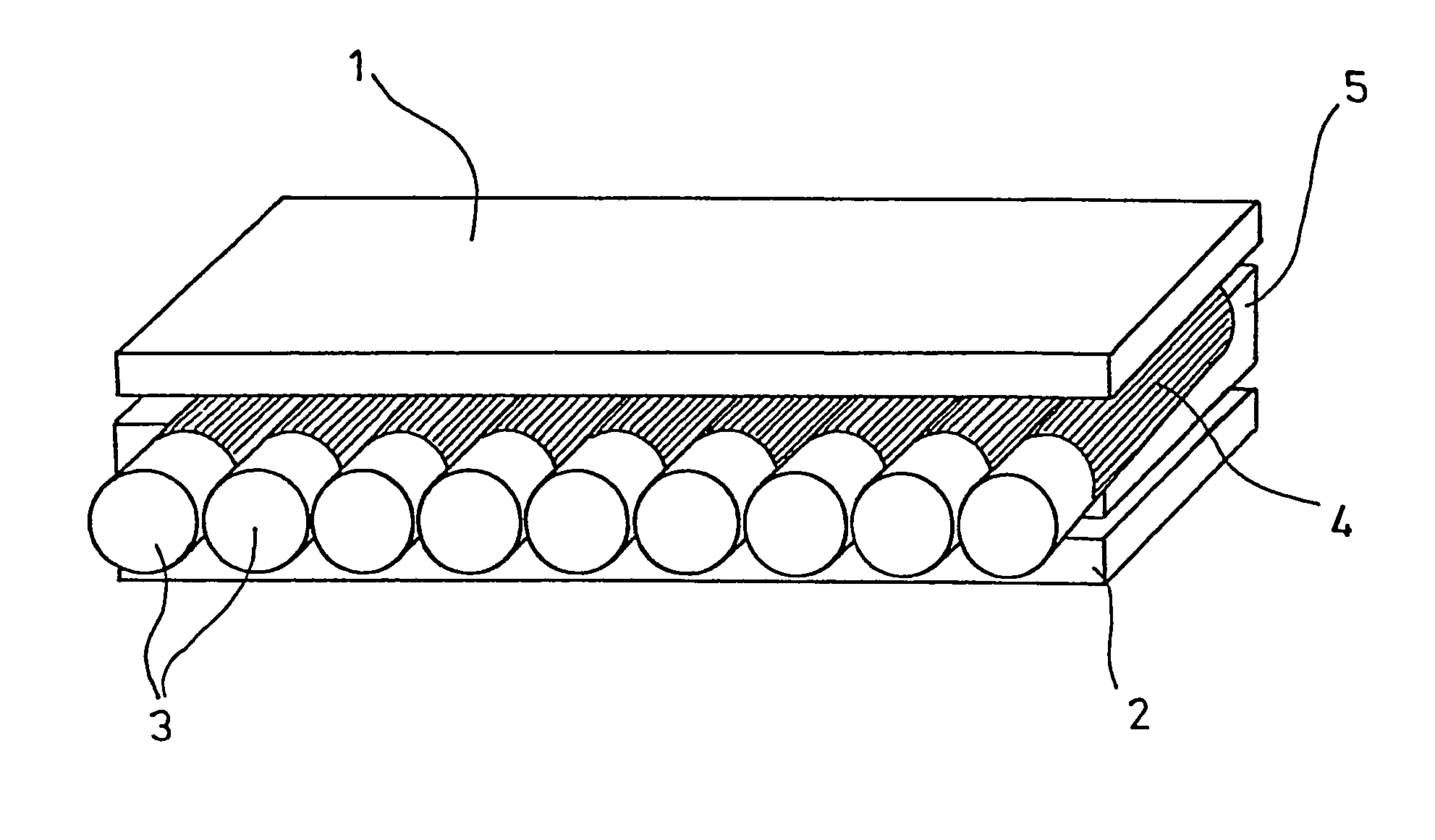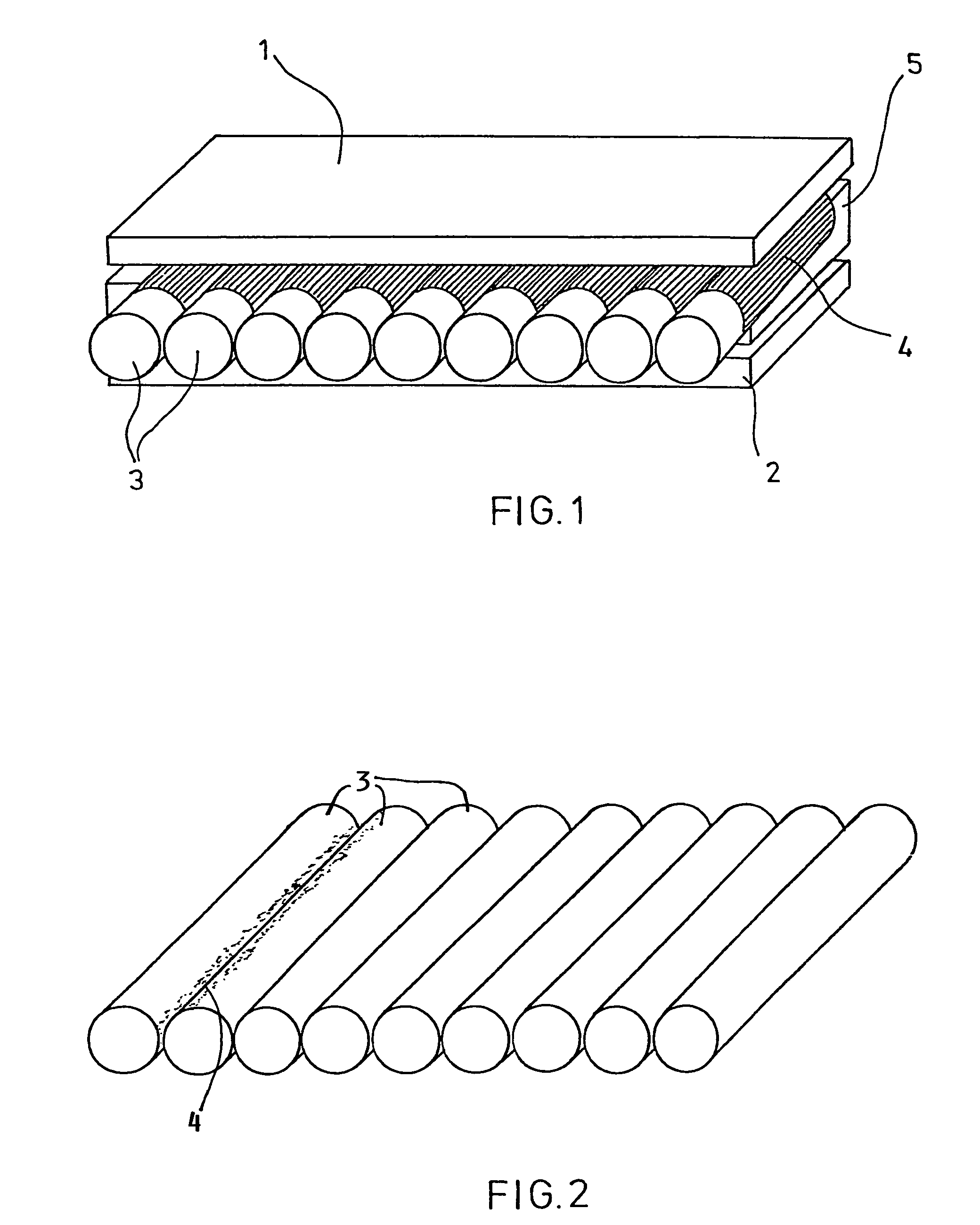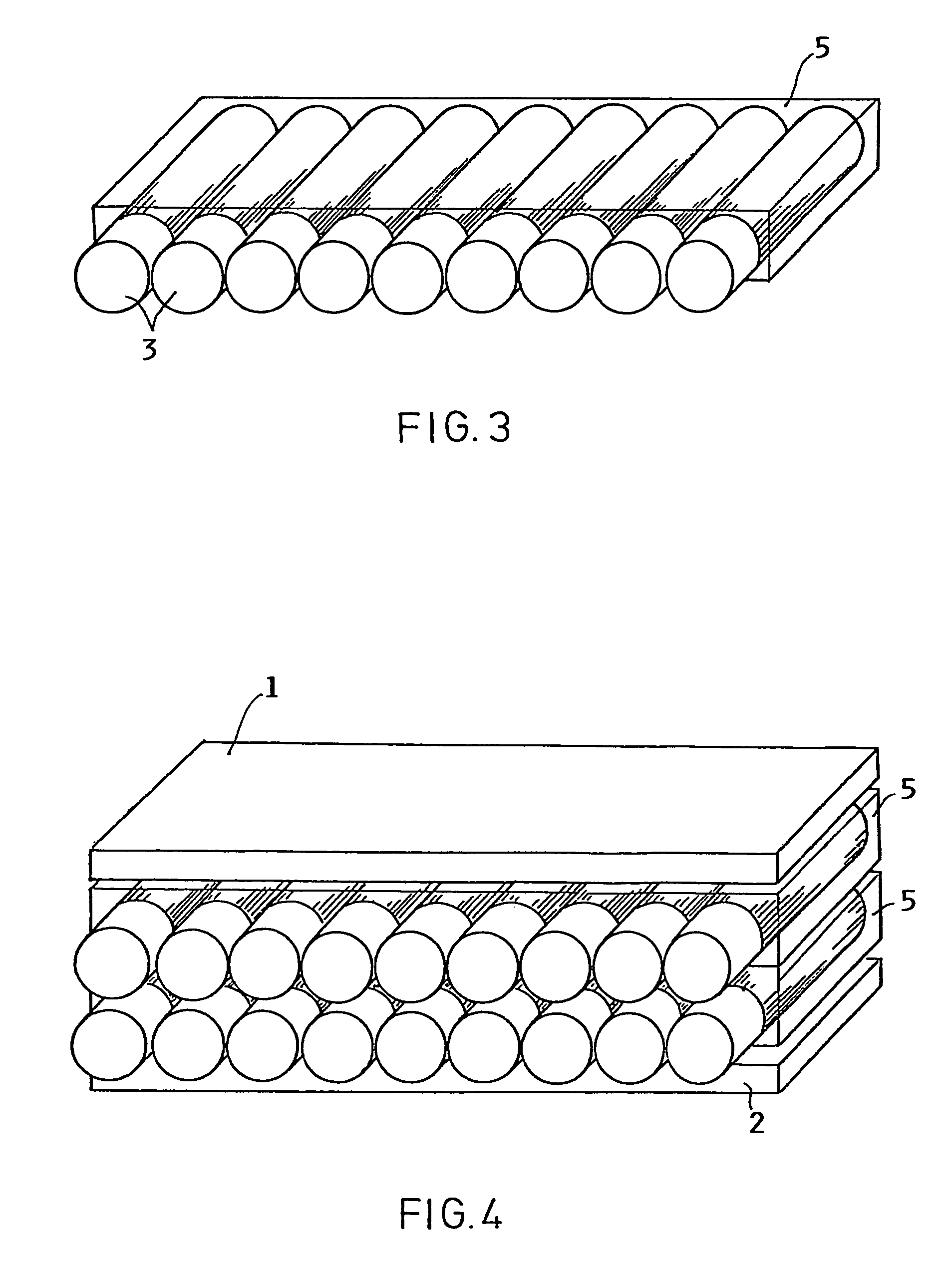Fiber-reinforced metallic composite material and method
a composite material and fiber reinforcement technology, applied in the direction of manufacturing tools, natural mineral layered products, solvents, etc., can solve the problems of not meeting weight limitations, not having the mechanical characteristics required, and not having the weight limitation. , to achieve the effect of good working characteristics, good corrosion resistance, and substantial modulus of elasticity
- Summary
- Abstract
- Description
- Claims
- Application Information
AI Technical Summary
Benefits of technology
Problems solved by technology
Method used
Image
Examples
Embodiment Construction
[0029]FIG. 1 shows an embodiment of a fiber-reinforced composite material according to the invention including a top cover metal sheet 1 and a bottom cover metal sheet 2 with inorganic mineral fibers 3 sandwiched between the metal cover sheets 1 and 2 which after bonding form the metal matrix. The fibers 3 have a length of at least 10 mm and a coating 4 of particles that adhesively bond the fibers 3 to each other to form a fiber film 5 which in turn bonds the metal layers or cover sheets 1 and 2 to each other. These metal sheets are made, for example, of an aluminum alloy of the DIN standard series 5XXX which defines an aluminum magnesium alloy AlMg2 which forms the metal matrix for the fibers 3.
[0030]In another embodiment the matrix material formed by the cover sheets may be made of aluminum copper alloys such as the AA 2024 type or of aluminum zinc alloys such as the AA 7075 type. An aluminum lithium alloy with a lithium content within the range of 0.5 to 3.0% by weight, titanium ...
PUM
| Property | Measurement | Unit |
|---|---|---|
| length | aaaaa | aaaaa |
| thickness | aaaaa | aaaaa |
| temperature | aaaaa | aaaaa |
Abstract
Description
Claims
Application Information
 Login to View More
Login to View More - R&D
- Intellectual Property
- Life Sciences
- Materials
- Tech Scout
- Unparalleled Data Quality
- Higher Quality Content
- 60% Fewer Hallucinations
Browse by: Latest US Patents, China's latest patents, Technical Efficacy Thesaurus, Application Domain, Technology Topic, Popular Technical Reports.
© 2025 PatSnap. All rights reserved.Legal|Privacy policy|Modern Slavery Act Transparency Statement|Sitemap|About US| Contact US: help@patsnap.com



